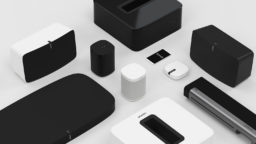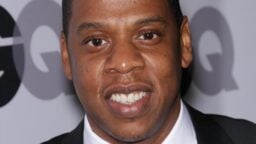What a rap battle that would be.
Imagine. Jay Z versus Dr. Dre.
Versus, erm, Daniel Ek.
Okay, maybe not. If we’re after a convincing hip-hop metaphor to portray streaming music’s showdown in 2015, one party probably doesn’t have the necessary cool quota.
What Daniel Ek does have in his favour, though, is a heck of a big lead.
Spotify‘s 60 million active users tally is streets ahead of everyone in the current audio streaming game, and it’s a brand with momentum on its side.
But the fact that Spotify’s yet to launch a high-definition premium tier clearly presents an opportunity for a new party to take advantage.
Up until this morning, that opportunity was a niche one.
Not anymore.
“Here’s what’s never said about Beats By Dre: artists could justifiably feel livid about its success, because it’s never paid out a single royalty – despite its lucrative business being entirely reliant on their creativity. Same goes for sonos”
The purchase of HQ audio streaming platform Tidal (ostensibly) by Jay Z is one of the most exciting moments in music’s quest to to re-sell itself to fans since the birth of the CD.
People forget that when Dr. Dre initially put his name to Beats in 2008, the brand sold itself almost entirely on audio quality.
Dre and Jimmy Iovine didn’t just believe fans were craving a crisper, cleaner sound from their headphones – they thought they could convince them of it.
As such, they put their most attractive asset – Dre himself – front and centre of their messaging.
Here was a face fans could trust, who many of them loved; a man who inarguably knew exactly what ‘studio quality sound’ felt like.
This tactic, executed with an effective mainstream marketing ploy involving music and sports stars, appears to have worked our rather well: at last count, the global premium headphones market was worth a ridiculous $4 billion a year. That’s close to a third of the value of the entire global recorded music industry.
The Beats By Dre brand, whether truly offering ‘studio quality sound’ or not, owns around 70% of it; a fact that was the cornerstone of last year’s famous $3bn sale to Apple.
But here’s what’s never said about the Beats hardware phenomenon: record labels and artists could justifiably feel livid about its success, because it’s never paid out a single royalty – despite its lucrative business, its very appeal, being entirely reliant on the creativity of songwriters and performers.
(Side-note: Universal did own a 13% stake in Beats and received a $409m payout when Apple snapped it up. But I’m willing to bet my left earpiece none of that cash ended up in the pocket of, say, The Kaiser Chiefs.)
The same goes for Sonos, another high-end audio hardware brand whose sales strategy is to tell people how good it can make music sound… while never thinking of rewarding those who create magic in the studio.
Sonos, which sells $700 sub-woofers amongst its wireless range of speakers, is expecting to turnover a billion dollars this financial year.
Do artists and labels get angry about that? Does Thom Yorke point his finger and direct diatribes about farting and corpses in their direction?
No. Instead, we sit round and coo over a logo that wobbles a bit when you scroll your mouse over it.
Two things in particular intrigue me about the success of Beats By Dre and Sonos:
i) That artists continue to berate Spotify for its payouts – 70% of its revenues go to rights-holders, remember – without ever questioning why ‘music’ hardware companies who are raking it in have never once dipped their hand into their pocket to compensate creatives;
ii) That both Beats By Dre and Sonos have managed to convince millions that they are buying into a premium audio experience when most of the music played in the world is terrible quality; more compressed then ever.
But let’s instead look positively at the success of Beats by Dre and Sonos.
Let’s ask: what can the music industry learn from them?
“Up until this morning, the opportunity in high-end digital audio was a niche one. Not any more”
Importantly, they’ve tapped into an exciting, recessive instinct amongst consumers – one that loves music and actively wants to pay a lot to enjoy it.
Unfortunately it’s one that comes with a caveat: music alone is not enough.
These consumers crave an association with a premium product. They want tasteful music devices to reflect their status as tasteful music connoisseurs. A sliver of cool is all-important for them to reach for their wallet.
So far, the high-end audio market – a logical beneficiary of the upsurge in purchasing of HQ music equipment – has never quite been able to crack this mentality.
Whether it’s Pure Audio discs, loss-less FLAC downloads or, yes, Tidal/Wimp, this area of the market has always struggled to seem anything more than the domain of music geeks; people who have no problem enunciating ‘192 kbs’ in public as if it doesn’t sound like the off-putting lexicon of Short Circuit.
Enter Shawn Carter.
If Jay Z is willing to make himself the face of Tidal/Wimp’s high-end streaming platform, just like Dr. Dre did in Beats launch, the mainstream calls.
If he’s willing to pin his brand to explaining the importance of the ‘studio quality’ premium audio of Tidal/Wimp, he could easily follow in Dre’s footsteps.
For starters, all of the millions who splash out on Dre headphones and Sonos speakers each year to listen to high-quality music might finally find something to use them for.
All they have to do is part with the price of a Tidal subscription: $19.99 per month – or a 35th of the price of Sonos’s sub-woofer.
Best of all, artists will get paid for the privilege.
As for Carter, this already looks like a nifty bit of business. The €50m he paid for the fully-licensed Wimp/Tidal – which has amassed half a million subscribers, with a presence in Scandinavia, the UK, Germany, The Netherlands and Belgium – is around 150 times cheaper than the valuation Spotify is set to receive if it can pull off a new round of funding.
Beats By Jay.
Sounds pretty good to me.Music Business Worldwide



